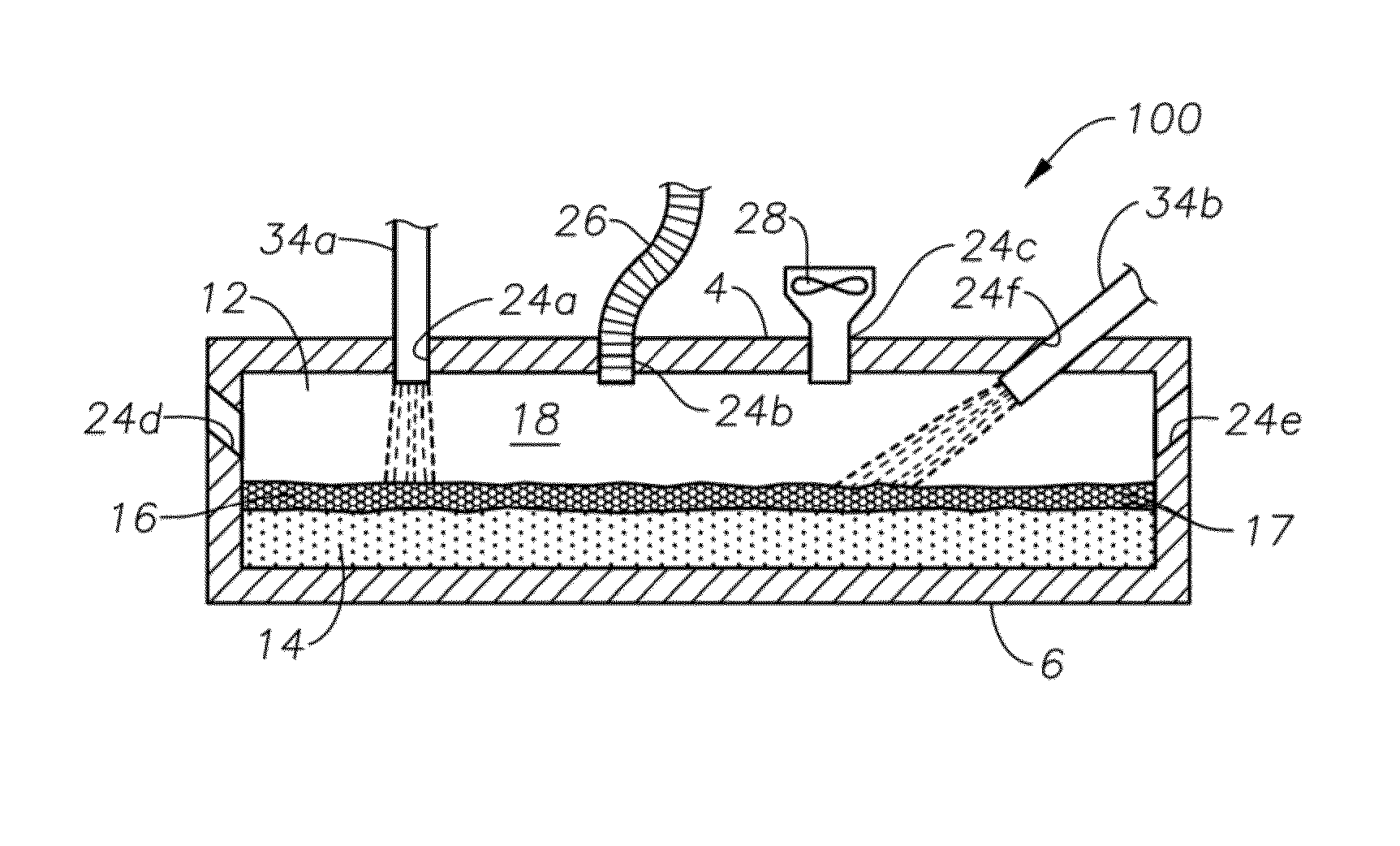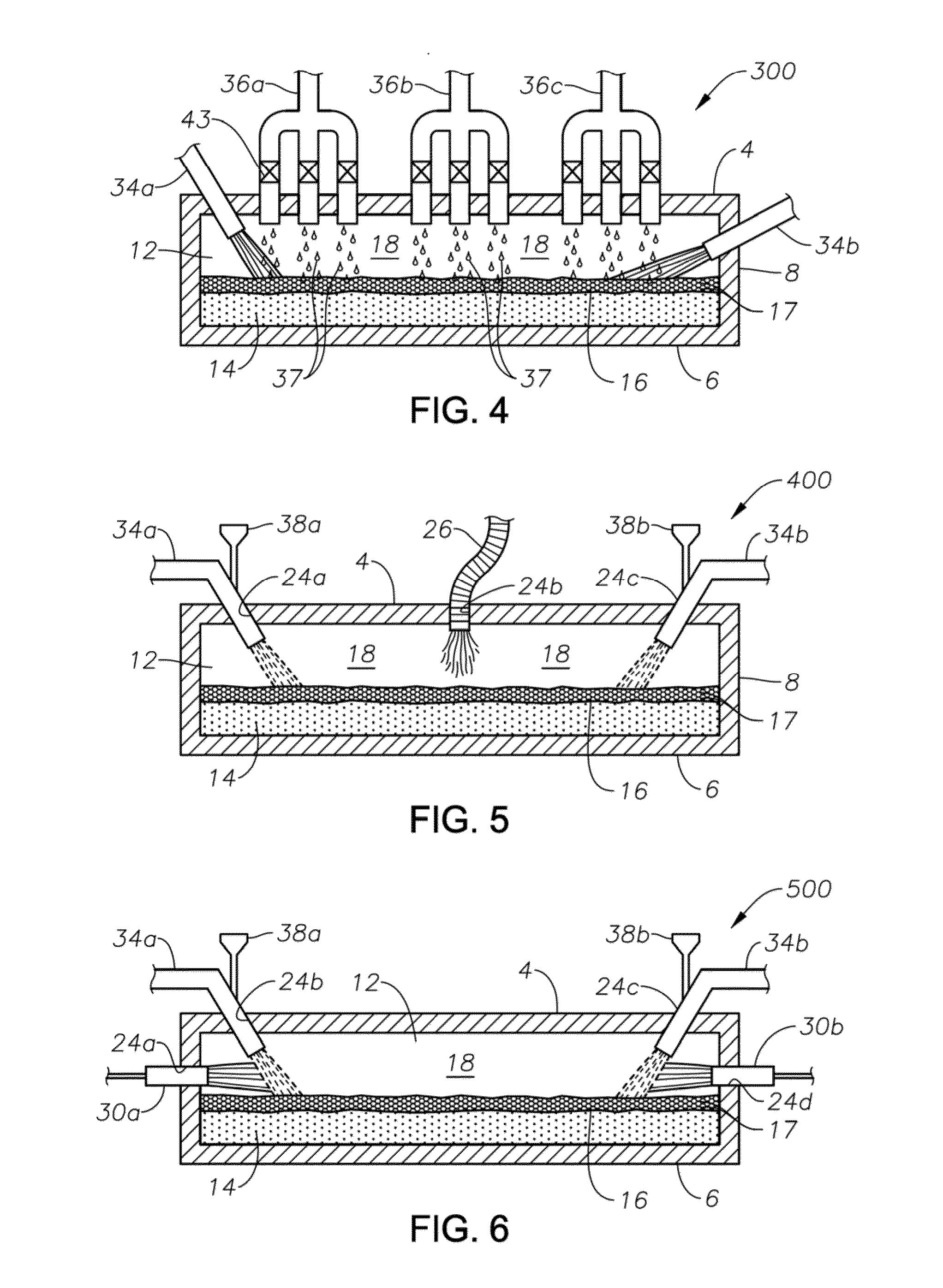Methods and systems for controlling bubble size and bubble decay rate in foamed glass produced by a submerged combustion melter
a combustion melter and foamed glass technology, which is applied in the field of combustion furnaces and methods of use to produce glass, can solve the problems of reducing the foam rate through scm process adjustments, rapid melting of glass batches, and high turbulence, and achieves the effects of reducing the foam rate, reducing the turbulence, and reducing the turbulen
- Summary
- Abstract
- Description
- Claims
- Application Information
AI Technical Summary
Benefits of technology
Problems solved by technology
Method used
Image
Examples
examples
[0094]Laboratory testing was carried out to evaluate use of atmospheres of different compositions to influence the foam decay rate and the size of the bubbles within the glass foam layer of glass compositions produced from an SCM. Nine trial conditions were tested, the details of which are detailed herein. Videos were made of all trials and bubble size measurements were made of the noted trials.
[0095]The experiments were conducted by placing 20 grams of SCM melter discharge (E-glass) into a quartz tube and placing the tube into a pre-heated furnace at 1375° C. The atmosphere inside of the tube, considered to be a reasonable simulation of the conditions inside the atmosphere of an apparatus downstream of an SCM, was controlled by adding gases of specific mixture from a gas mixing and flow control station to the top of the tube. The tube was sealed with a high temperature refractory fiber so that the ambient air was sealed outside the tube and only the gases from the mixing and flow c...
PUM
 Login to View More
Login to View More Abstract
Description
Claims
Application Information
 Login to View More
Login to View More - R&D
- Intellectual Property
- Life Sciences
- Materials
- Tech Scout
- Unparalleled Data Quality
- Higher Quality Content
- 60% Fewer Hallucinations
Browse by: Latest US Patents, China's latest patents, Technical Efficacy Thesaurus, Application Domain, Technology Topic, Popular Technical Reports.
© 2025 PatSnap. All rights reserved.Legal|Privacy policy|Modern Slavery Act Transparency Statement|Sitemap|About US| Contact US: help@patsnap.com



